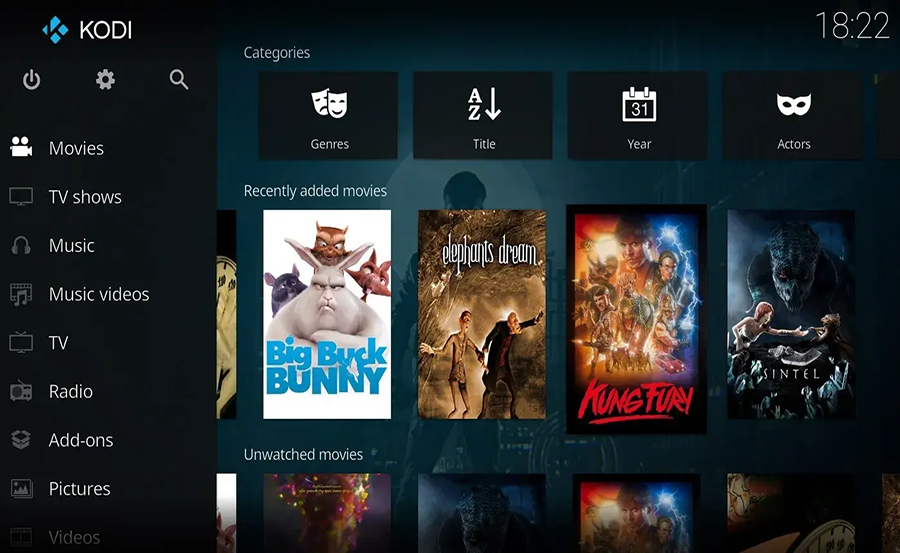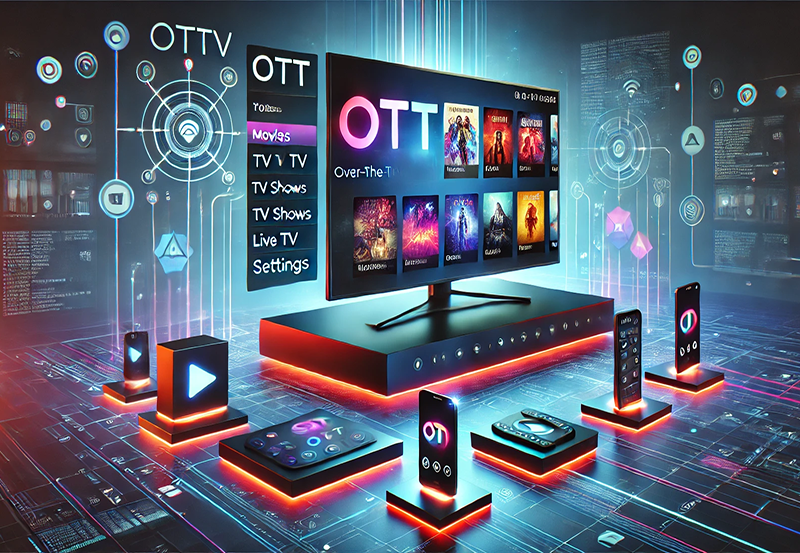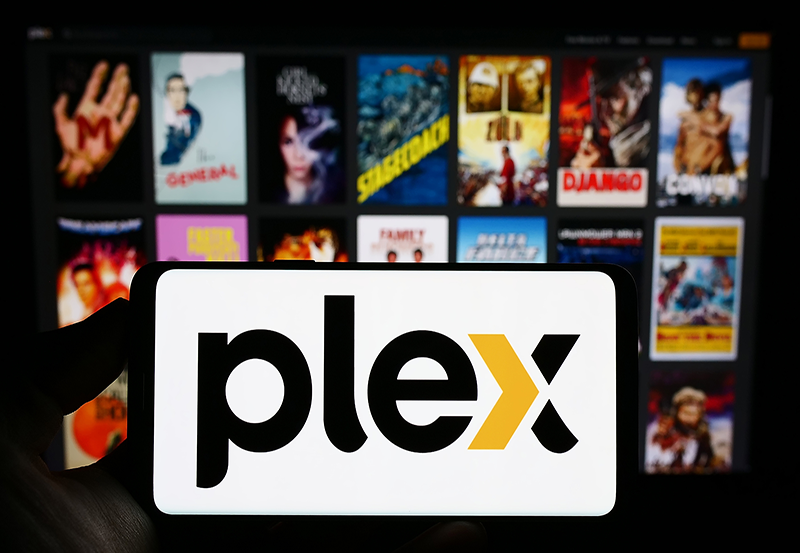Installing Kodi IPTV can sometimes feel complicated, but with this complete guide, you’ll have everything you need to start streaming your favorite content in no time. Whether you’re using a smartphone, tablet, or smart TV, this article will walk you through the essentials in simple, practical steps. Enjoy maximizing your IPTV experience with ease by following along as we cover all the basics and beyond.
Understanding IPTV and Kodi
In recent years, IPTV has transformed the way we consume media by allowing us to stream television content over the Internet. But how does it all work, and where does Kodi fit into the picture? Understanding these concepts is the first step to a seamless streaming experience.
IPTV, or Internet Protocol Television, delivers television content using internet protocols. This means you can watch your favorite shows without relying on traditional cable or satellite signals. On the other hand, Kodi is an open-source media player that allows users to play and view streaming media such as videos, music, podcasts, and videos from the internet.
Smart Advice:
Catch every touchdown, goal, or slam dunk with IPTV for sports lovers, built for non-stop sports excitement.
Why Choose Kodi for IPTV?
The flexibility and customizability of Kodi make it an excellent choice for IPTV. But why else should you consider using it? Kodi allows users to integrate with various IPTV providers, especially when using M3U playlists for IPTV services.
Additionally, Kodi is available on a wide range of devices, from Android phones to Amazon Fire TV sticks. Its versatility means you can tailor your viewing experience to fit your needs, granting compatibility with virtually any IPTV service you prefer.
Key Features of Kodi
When it comes to media players, Kodi’s feature set is hard to beat. Some of its remarkable features include:
- Support for a wide range of media types.
- Ability to install third-party add-ons to extend functionality.
- Customizable interface to suit your preferences.
- Compatibility with numerous devices and operating systems.
Advantages of IPTV with Kodi
If you’re new to combining Kodi with IPTV, you’ll find several advantages to this setup. Here are a few reasons why folks prefer using Kodi over other platforms:
- Ease of access to global content libraries.
- Potential cost savings compared to traditional cable services.
- Enhanced viewing control with on-demand streaming capabilities.
- Potential integration with other smart home systems for a unified entertainment experience.
Preparation Before Installation
Before jumping into the installation of Kodi for IPTV, ensure you have the prerequisites ready. This preparation will simplify the process and ensure an efficient installation on any device.
Checking System Requirements
You’ll want to ensure your device meets the necessary system requirements for Kodi. Generally, most modern devices have no problem running it, but it’s still a good idea to double-check. Make sure your system is up-to-date to avoid any issues during the installation process.
Choosing the Best IPTV Service
Another critical step is selecting the best IPTV service tailored to your viewing needs. Spend some time researching various service providers and reading customer reviews. Consider factors such as channel variety, streaming quality, customer support, and pricing to make an informed decision.
Installing Kodi on Various Devices
With your prerequisites in place, it’s time to dive into the installation process of Kodi across different devices. Note that the steps here may vary slightly depending on the operating system.
Kodi Installation on Windows and Mac
To install Kodi on your desktop or laptop, whether running Windows or macOS, follow these simple steps:
- Visit the official Kodi website and download the application suitable for your OS.
- Once the download completes, run the installation file.
- Follow the on-screen instructions for a successful installation.
- Launch Kodi and complete the initial setup process.
Setting Up Kodi on iOS and Android Devices
Let’s walk through setting up Kodi on mobile devices. For Android users, head to the Google Play Store and search for the Kodi app. Download and install the app seamlessly. iOS users will need to perform a workaround using Cydia or another third-party app to get Kodi on their device due to App Store restrictions.
Utilizing Kodi on Amazon Fire TV
Installing Kodi on an Amazon Fire TV device requires enabling apps from unknown sources. Navigate to the Fire TV settings and toggle this option. Use the Downloader app to access the Kodi APK file and install it. Upon completion, Kodi will be available for your use on your Fire Stick or Fire Cube.
Configuring IPTV on Kodi
With Kodi ready, it’s time to configure it to receive IPTV streams. This involves adding the right add-ons or M3U playlists that correspond with your IPTV service provider.
Adding Add-ons to Kodi
Kodi’s functionality hinges on third-party add-ons. To add an IPTV add-on:
- Open Kodi and navigate to the “Add-ons” section.
- Select “Download” and then choose the desired category, such as “Video Add-ons.”
- Browse available add-ons and select one that supports IPTV, such as PVR IPTV Simple Client.
- Install the add-on, then configure it using your IPTV service’s details.
Incorporating M3U Playlists
M3U playlists are vital for enabling IPTV on Kodi. Here’s how to set them up:
- Launch Kodi and go to “Add-ons.”
- Select “My Add-ons” and locate your installed IPTV add-on.
- Access add-on settings and input your M3U playlist URL provided by your IPTV service.
- Save changes and restart Kodi for the changes to take effect.
Optimizing Your Kodi IPTV Experience
Once Kodi and IPTV are configured, adapt your settings for an optimal viewing experience.
Network Settings and Buffering
Sometimes, streaming might suffer due to network issues. Tweak your network settings on Kodi to minimize buffering. Consider using a wired connection for stability or upgrading your Wi-Fi standards for better performance.
Coding Tweaks and Skins
Kodi features adjustable skins that enhance visual appeal. While exploring skins, ensure they don’t bog down system resources which might negatively impact performance. Additionally, you can utilize coding tweaks to further adjust settings for enhanced compatibility with your IPTV provider.
Keeping Kodi and IPTV Add-ons Updated
Keeping your Kodi system and its add-ons updated is crucial for consistent performance. Regular updates can iron out existing bugs, enhance security, and ensure the addition of new features.
Automatic vs. Manual Updates
Enable automatic updates on Kodi to receive the latest installations as they roll out. If you prefer control, manually update your add-ons periodically by visiting the add-ons menu.
Staying Informed through Online Forums
Join online communities or forums dedicated to Kodi users. These resources can offer advice on optimal configurations, updates on new add-ons, as well as problem-solving strategies from fellow Kodi enthusiasts. Keeping yourself informed will allow you to keep pace with the latest in Kodi technology.
Is Kodi IPTV Legal?
The legality surrounding IPTV and Kodi is often discussed but can be muddled. While using Kodi software itself is legal, the legality often varies when it comes to streaming certain content.
Avoid using unauthorized add-ons that may administer pirated content. It’s essential to use IPTV services that comply with copyright laws to stay within legal boundaries.
VPN Usage and Security Concerns
Using a VPN (Virtual Private Network) when streaming can help secure your privacy and may circumvent regional restrictions. Choose a reputable VPN service that guarantees no logs are kept of your online activity, providing peace of mind during streaming sessions.
The Importance of Being Aware
Staying informed about IPTV legality is a responsibility for every user. Make sure to research applicable laws in your area and harmonize your streaming activities with these guidelines responsibly.
Frequently Asked Questions

- What is the Best IPTV service for Kodi?
- Choosing the best IPTV service depends on your personal preferences, such as the variety of channels and content quality. Look for providers with good reviews, customer support, and a user-friendly interface.
- How can M3U playlists enhance my IPTV experience on Kodi?
- M3U playlists allow seamless access to a wide range of channels and content, improving the customizability and reach of your IPTV service when used with Kodi.
- Is it necessary to use a VPN with Kodi IPTV?
- While not mandatory, using a VPN is highly recommended for protecting your privacy, enhancing security, and potentially bypassing geographical restrictions while streaming.
- How do I avoid buffering issues when watching IPTV on Kodi?
- Buffering can be minimized by ensuring your internet connection is stable, using wired links where possible, and optimizing Kodi’s network settings for better performance.
- Can I customize the look and feel of Kodi when using IPTV?
- Absolutely! Kodi’s skins and themes allow you to personalize the visual presentation, aligning it with your aesthetic preferences while potentially enhancing usability.
- How frequently should I update my Kodi and IPTV add-ons?
- It’s wise to update Kodi and its add-ons regularly, ensuring you’re always benefiting from the latest features, security enhancements, and bug fixes.
- Are there restrictions on the content I can watch using Kodi IPTV?
- Yes, some regions may have specific legalities around streaming certain content. Make sure to adhere to local regulations and use authorized IPTV services to avoid any legal inconveniences.
Understanding IPTV Television: An Introduction for Beginners




